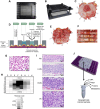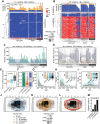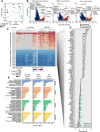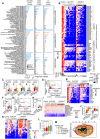Dysregulated mitochondrial energy metabolism drives the progression of mucosal field effects to invasive bladder cancer
- PMID: 40996337
- PMCID: PMC12531120
- DOI: 10.1002/path.6474
Dysregulated mitochondrial energy metabolism drives the progression of mucosal field effects to invasive bladder cancer
Abstract
Multiplatform mutational and gene expression profiling complemented with proteomic and metabolomic spatial mapping were used on the whole-organ scale to identify the molecular profile of bladder cancer evolution from field effects. Analysis of the mutational landscape identified three types of mutations, referred to as α, β, and γ. Time modeling of the mutations revealed that carcinogenesis may span 30 years and can be divided into dormant and progressive phases. The α mutations developed in the dormant phase. The progressive phase lasted 5 years and was signified by expanding β mutations, but it was driven to invasive cancer by γ mutations. The mutational landscape emerged on a background of disorganized urothelial differentiation, activated epithelial-mesenchymal transition, and enhanced immune infiltration with T-cell exhaustion. Complex dysregulation of mitochondrial energy metabolism with downregulation of oxidative phosphorylation emerged as the leading mechanism driving the progression of mucosal field effects to invasive cancer. © 2025 The Author(s). The Journal of Pathology published by John Wiley & Sons Ltd on behalf of The Pathological Society of Great Britain and Ireland.
Keywords: bladder cancer; dysregulation of mitochondrial energy metabolism; mutational landscape; time modeling.
© 2025 The Author(s). The Journal of Pathology published by John Wiley & Sons Ltd on behalf of The Pathological Society of Great Britain and Ireland.
Figures






References
-
- Curtius K, Wright NA, Graham TA. An evolutionary perspective on field cancerization. Nat Rev Cancer 2018; 18: 19–32. - PubMed
-
- Majewski T, Yao H, Bondaruk J, et al. Whole‐organ genomic characterization of mucosal field effects initiating bladder carcinogenesis. Cell Rep 2019; 26: 2241–2256.e4. - PubMed
-
- Lawson ARJ, Abascal F, Coorens THH, et al. Extensive heterogeneity in somatic mutation and selection in the human bladder. Science 2020; 370: 75–82. - PubMed
MeSH terms
Grants and funding
LinkOut - more resources
Full Text Sources
Medical

